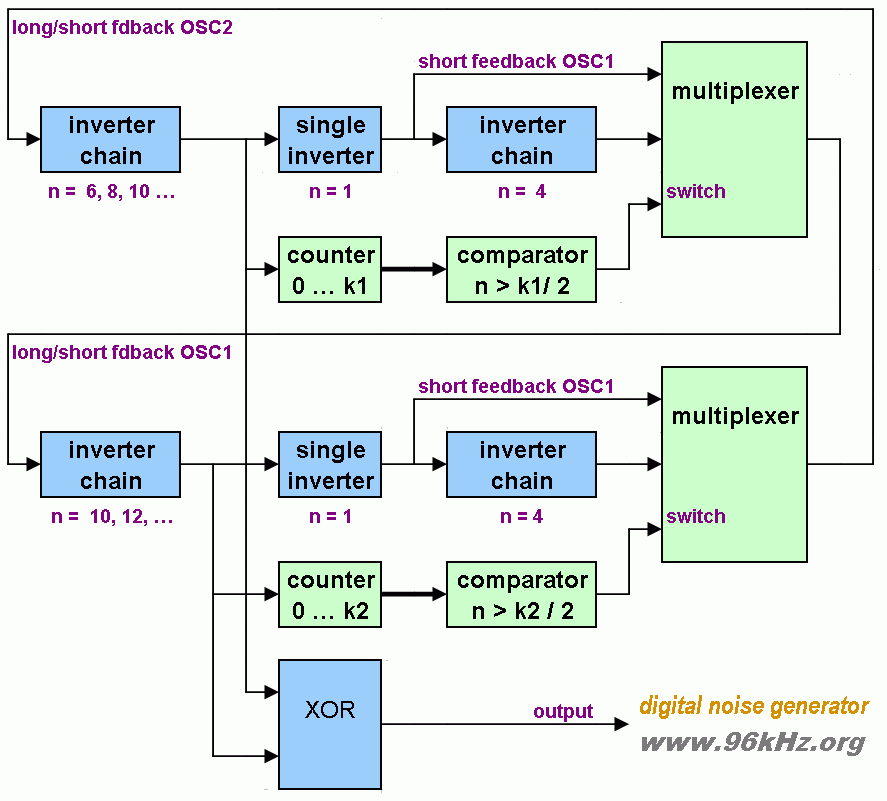| 96 kHz.org |
| Advanced Audio Recording |
digital noise generator Digital noise generation can easily done with LFSR-methods as shown here LFSR-noise. This article deals with a concept to generate a noise with a totally unpredictable spectral response using analog methods in programming digital circuits:
This circuit produces very effective noise and totally unpredictable sequences of 0 and 1 values. It works with two interruptible feedback chains which interact with each other and was initially designed with TTL chips to find random frequencies. It was tested in a Lattice PLD and can be easily changed to e.g. Verilog language or VHDL (VLSI Hardware Description Language).
random number generator Adding each sampled bit of the output and joining them to words can be used to obtain digital noise values easily. In the used application the output is sampled at 192kHz x 16 to produce a 16 Bit value. Further EXOR operation is applied to obtain a symmetric bias free data stream.
Conclusion and Summary PLDs can be used to produce noise for audio applications to lower the problem of quantization during production by dithering. See an article about noise generation
|
| © 2002 - Dipl.-Ing. Jürgen Schuhmacher |
